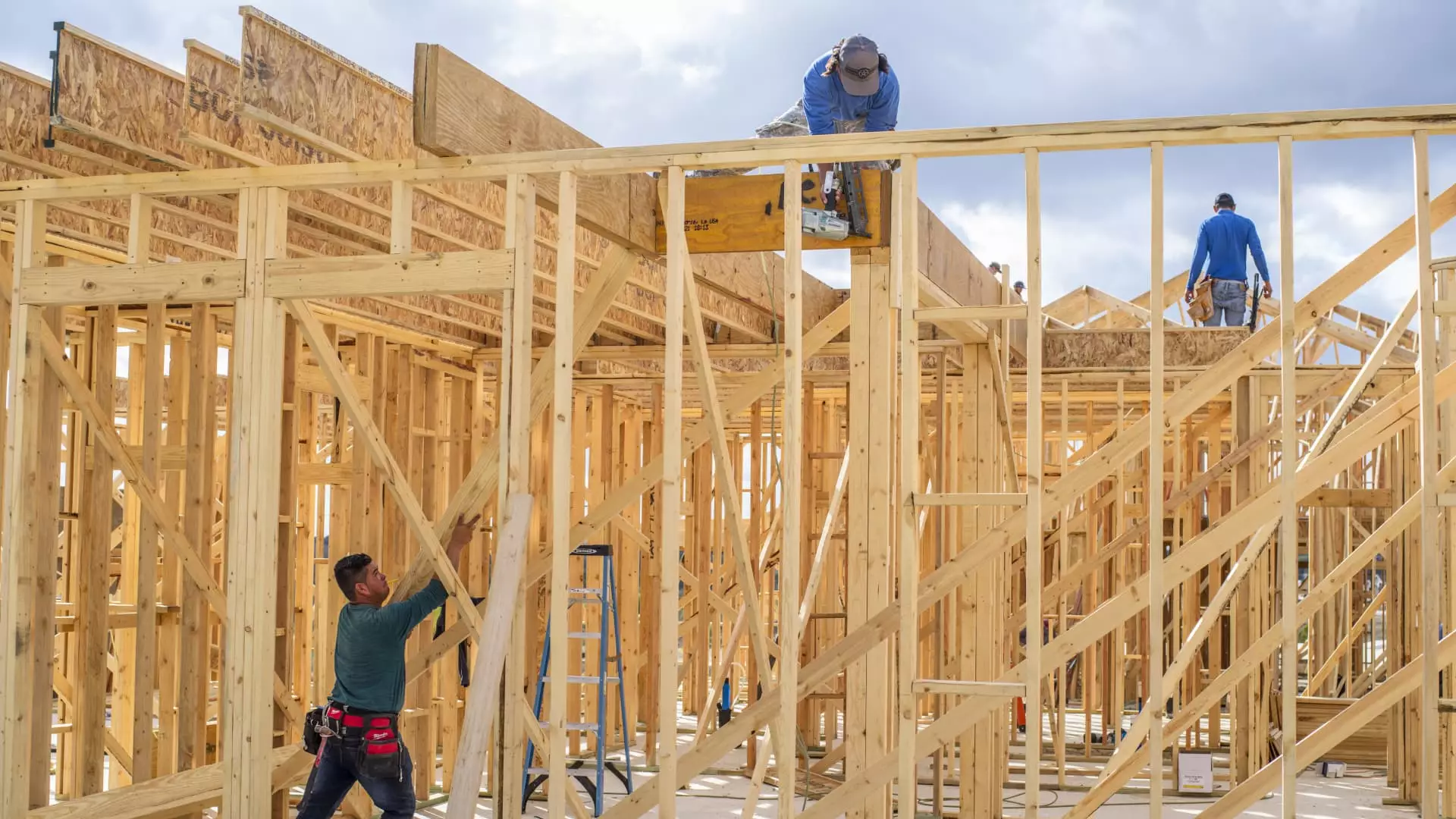The housing market in the United States is experiencing a cooling period, as evidenced by a significant downturn in sentiment among single-family homebuilders. As reported by the National Association of Home Builders (NAHB), the Housing Market Index (HMI) suffered a notable decline of 5 points in February, landing at a score of 42. This score, falling beneath the critical threshold of 50, indicates a prevailing pessimism within the sector—marking the lowest sentiment level seen in five months. Seeing as only 12 months prior, the index was at a more optimistic 48, the current readings signal an urgent need for scrutiny into the key factors influencing builder sentiment.
A multitude of issues underlies this downward trend, with escalating tariffs serving as a major concern for builders. Tariffs, particularly those affecting essential materials such as appliances and softwood lumber—32% and 30% respectively according to NAHB’s chief economist Robert Dietz—pose a serious threat to cost management. Such financial pressures hinder builders’ profitability and ultimately affect market stability. While there is a flicker of hope for regulatory reform and pro-development policies, the overshadowing uncertainty regarding tariffs has triggered a recalibration of expectations for 2025.
The crux of the housing market’s woes can also be traced to the rising mortgage rates, which have spiked beyond the 7% mark recently after hovering around 6% in previous months. As these rates climb, affordability mechanisms for potential buyers are significantly strained, leading to a further decline in demand. Thus, the dual challenge of higher costs and reduced purchasing power is placing an additional burden on builders, who are already grappling with an unfavorable market climate.
When dissecting the individual components of the HMI, the data reveals disconcerting trends. Current sales conditions fell to 46, indicating a dwindling confidence in immediate transactions. More troubling, however, is the 13-point drop in sales expectations over the next six months, which plummeted to 46, marking the bleakest sentiment since December 2023. With buyer traffic also witnessing a decline to 29, builders are undoubtedly grappling with challenges that extend well beyond mere fluctuations in interest rates.
Reports from various homebuilders underscore this shrinking buyer pool. Ryan Marshall, CEO of PulteGroup, highlighted in their earnings release that despite actions by the Federal Reserve to alleviate short-term interest rates, elevated mortgage rates continue to suppress buyer enthusiasm. This dynamic not only impacts current sales but hampers future prospects as well.
A notable development within the housing market is the dwindling percentage of builders opting to reduce prices, falling to 26% in February from 30% in January. This decline marks the lowest figure recorded since May 2024. Simultaneously, the effectiveness of sales incentives appears to be waning. In a climate where affordability is a predominant concern, traditional incentives become increasingly ineffective, particularly for buyers who find themselves priced out of the market altogether. Builders who may have relied on these incentives must soon confront a fundamental shift in purchasing power, urging them to reconsider their approach.
As we approach the critical spring housing season, the implications of the current builder sentiment cannot be overstated. A fall in builder confidence is likely to translate into reduced inventory levels at a time when buyer activity typically increases. Consequently, if this trend persists, it may lead to even tighter markets and further strain affordability.
While policy improvements are a potential lifeline for homebuilders, the prevailing uncertainty surrounding tariffs and the consistent rise in mortgage rates cast a long shadow over the market. To navigate these turbulent waters, builders will need to adapt, innovate, and perhaps, reset their pricing and sales strategies to effectively engage with a shrinking and cautious buyer demographic. The road ahead may be challenging, but astute builders can still find opportunities—adaptation and responsiveness will be key as the landscape continues to transform.

